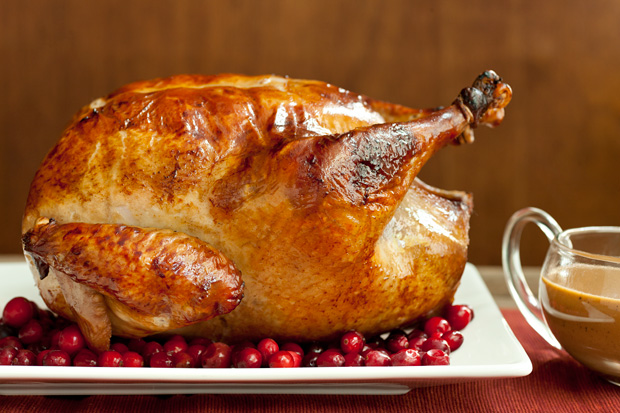 Image from www.chow.com
Image from www.chow.com
Did you know that the typical Thanksgiving day broad-breasted white turkey develops in as little as 136 days (on average)? This remarkably quick development is a result of years of selective breeding. The average turkey in 1929 was only about 13 pounds, whereas modern turkeys average around 30 pounds with much of the weight centered in the breast muscles.
The Poultry Science Association claims that this breeding program has resulted in skeletal problems as muscle growth outpaces bone growth, heart problems, and a lower ability to mount immune responses to certain pathogens; hence the use of antibiotics.
Researchers and breeders are hopeful that the turkey genome, which is nearly 95% sequenced, will help treat or prevent complications associated with rapid growth in addition to creating animals that may be resistant to pathogens such as E. Coli, influenza or salmonella. Likewise, sequencing of the genome may allow researchers to detect genes important in creating strong bones for additional selective breeding programs.
Dr. Rami Dalloul, lead author and researcher at Virginia Tech was quoted on NPR explaining that the process of creating such a pathogen-resistant bird will take generations of selective breeding. So don't expect to hear about E. coli resistant turkeys anytime soon.
Sources:
Dalloul RA, Zimin AV, Settlage RE, Kim S, Reed KM. Applying Next-Generation Sequencing to Solve Poultry Problems: Next-generation sequencing strategies for characterizing the turkey genome. Poultry Science. 93:479-484, 2014. http://dx.doi.org/ 10.3382/ps.2013-03560
